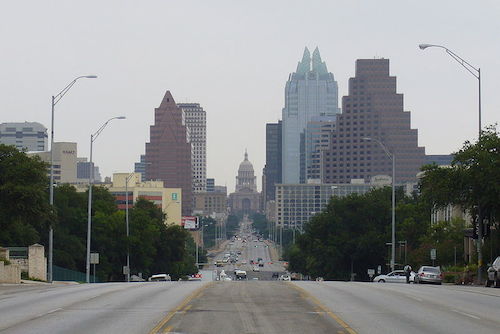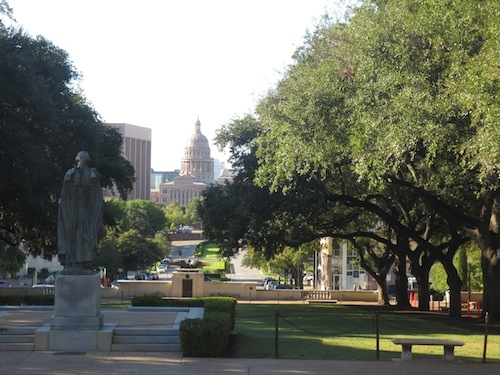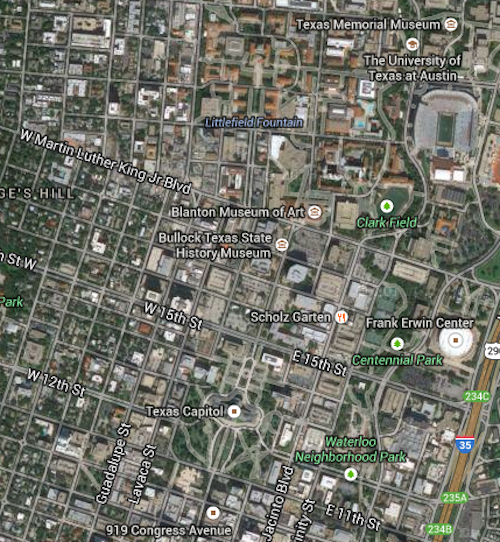
(Image Credit: dfwfoodtrucks.com)
There’s no doubting that Austin’s a great example of urban sprawl. Anyone who’s driven up Burnet Road on a shopping expedition, or down South Lamar looking for a romantic Saturday night dinner, has probably wondered at some point: Why can’t these things just be closer to where I live? Fortunately, I don’t think this question is born out of narcissism. Things are far apart in Austin. And given the town’s expanding population, they feel as though they’re getting farther and farther apart, with all the increased traffic and whatnot. Over the decades, this city has grown and expanded without any apparent civic regard for urban planning. Which makes the Capital Building a really interesting monument. The roads leading to the Texas State Capital are reminiscent of Pierre Charles L’Enfant’s planning of Washington, D.C., and they convey a confidence in American governance that would make Governor Rick Perry blush. Either that or the eyes of Texas are upon us.
The image at the top of this post always makes for a great drive when one’s headed north on Congress Avenue. It’s certainly a statement. As you progress, the Texas State Capital Building stairs you down with equal measures of confidence and invitation. There’s no obnoxious pride from this angle. There’s no celebration of the fact that the building is 33 feet taller than the United States Capital Building in Washington, D.C. Only Dostoevsky’s Underground Man could look at the way the Texas State Capital is set and feel spite or cynicism. It’s all absolutely gorgeous and inspiring, though I’m not really sure I can articulate precisely what it inspires. Maybe it’s meant to inspire a feeling of Texas pride, I don’t know. In any case, you certainly don’t need to have any Texas pride in order to appreciate the front of this building from a mile away due south. When viewed from the north, however, things start to get fuzzy.

(Image Credit: codinacrossamerica.com)
If you stand in front of the University of Texas tower and look south, it’ll appear that you’re also at the end of another avenue leading directly to the Texas State Capital. But you’re not. It’s all a brilliant illusion. The University of Texas is set at an angle to the state capital, but since all you can really see from campus is the rotunda, it appears as if the two institutions are square. Of course, it doesn’t really matter if the two buildings are in fact squared up with one another. Important governmental buildings across our country (and across the world, going back to the Roman forum) have never been flush. But deep down, I suspect that there’s some ancient human impulse that wants our important governing institutions to appear orderly and well thought-out.

(Image Credit: Google Maps)
It’s the best political ad in history: the democratic forum that appears orderly within and without. Can we take pleasure in these proportions and still be good citizens? I don’t know. The Texas State Capital, after all, isn’t the tallest building in Austin when viewed from far away.



Recent comments
2 years 29 weeks ago
2 years 44 weeks ago
2 years 44 weeks ago
2 years 50 weeks ago
3 years 4 weeks ago
3 years 4 weeks ago
3 years 4 weeks ago
3 years 6 weeks ago
3 years 6 weeks ago
3 years 6 weeks ago